Issue #199: Pakoras with Chaat Masala and Mint Chutney
Cooking with Friends, a Handy Handi for a Biryani Feast that Started with Chickpea-Fried Vegetables
Just over a year ago, Nate and I spent almost three weeks touring around India, a transition trip between life in New York City and our new lives in New Hampshire. Nate has always been fascinated by Indian culture. He long dreamt of a tour around the subcontinent. His break between jobs at Mt. Sinai and Dartmouth Health seemed like a good period to take the time for an extended journey.

An inspiration and advisor for our trip was Nate’s longtime friend and colleague, Dr. Reena Karani, an eminent medical educator at New York’s Mt. Sinai hospital and a great foodie who hails originally from Bombay. (You can read about our search for a few super local Goan ingredients for Reena in Issue #139.) Reena and I occasionally used to cook together and cohost dinners at what was then Nate’s apartment in the East Village. Life moves on and gets busier and it's been a long time since we’ve had the chance to spend time together in the kitchen. That changed this weekend.
Invited by Nate to Dartmouth to give Grand Rounds, Reena built in some extra time for us to co-host an Indian feast for colleagues and friends. After a little menu ideation, we decided to build the meal around an elaborate Hyderabadi biryani. In addition to being an appropriately festive dish, this would give us a chance to use a beautiful, hand-hammered handi Reena had custom made in India last year.
Having hand-carried the handi home from India on Quatar Airways, it wasn’t too much of a challenge to bring it along on the Dartmouth Coach. Swaddled like a baby in a traditional manner and strapped into its own seat on the bus, the handi arrived in Hanover ready for its starring role.
The biryani took almost a full day to prepare. We began by frying piles of thinly sliced onion for the birista that would be strewn over the layers of rice. We marinated chicken in a fragrant masala bound by my tangy homemade yogurt and braised it with potatoes, which Reena snuck in for added flavor and texture, thumbing her nose at what some purists might consider biryani blasphemy. We par-cooked special biryani-ready Sella basmati rice with herbs and spices and some of the fragrant oil from frying the birista. And we steeped freshly ground Iranian saffron in ghee to flavor and color the whole thing. After layering the biryani in the handi with more herbs and spices, including Reena’s personal biryani masala, perfuming it with rose and pandan waters, and sealing it with a flour and water paste, we cooked it on my wok burner until it had steamed to perfection.
To serve with the biryani, we made a raita of cucumber, a kachumbar packed with red onion, and mirchi ka salan, green chilis braised in a masala of peanut, sesame, and coconut that’s a traditional accompaniment.
The meal began with a selection of freshly fried pakoras—vegetables and paneer dipped in spiced chickpea batter and deep fried until crisp—that we served with a bright mint chutney. When thinking about which of the recipes from the meal I might share this week, or rather, which might my readers dare attempt on their own, it was the pakoras that seemed the best option. They were addictively delicious and simple enough to get right, provided you can find a few key Indian spices to give them an authentic taste.
After shopping, the only hurdle to overcome to make pakoras is a reluctance to deep fry. If you’ve been reading Kitchen Sense for a while, you might recall I dealt with my own frying hesitance last year by leaning in and purchasing a counter-top deep fryer. Never did I think I would need another appliance, let alone an excuse to fry more food for me and Nate, preferring to limit our consumption of the category. But reading about a new deep fryer from All-Clad that filtered the oil between uses and was easy to clean, and then finding it on sale, I decided to take the plunge, so to speak. It was a game changer, both in terms of the quality of the fried food produced and because I can reuse the oil easily without wasting it.
Of course, you don’t need a deep fryer to make pakoras. You can heat a sufficient depth of oil in a small cast-iron Dutch oven or other deep pot. Before the new fryer arrived, I was fond of frying in small batches to limit the amount of oil needed and to be able to pay close attention to the foods as the frying progressed. I purchased a couple of small, deep, quart-size cast-iron pots that I still use to fry up small batches. The Japanese have a cool pot designed for frying at home that retains heat at a constant temperature, minimizes splatter, and has a built-in little rack to allow draining. And of course the Chinese have their wok, which is an excellent device in which to fry, its construction and shape providing good heat control and plenty of surface area to crisp what may.
What You Need
As for the choice of frying oil, you can deep fry in any oil with a high smoke point and neutral flavor. I’ve been using rice bran oil lately, but I also like peanut.
What to fry? For our pakoras on Saturday we used cauliflower, Asian eggplant, thinly sliced potato, and onion, the last of which requires a slightly different battering technique (see recipe notes, below). We also fried chunks of (homemade) paneer, which I’d highly recommend. There’s really no vegetable you can’t turn into delicious pakoras, provided you have the patience to allow it to fry evenly and fully cook through.
A word about spices. There are a couple that you really need to get the right flavor of pakoras. Ajwain or carom seed and amchur or ground green mango are key. You can find them in any Indian market, and like every other ingredient on the planet, also online at Kalustyan’s or in their Manhattan shop. As for the chaat masala, this you can purchase ready made, but I’ve provided a recipe, too. If you intend to make your own, you’ll need to order of sulfurous black salt, too.
RECIPE: Reena’s Parkoras
Makes enough batter for a pile of pakoras
2 cups chickpea flour (aka besan)
1 teaspoon ajwain (aka carom seed)
2 teaspoons ground coriander
2 teaspoons Kashmiri chili powder
1/2 teaspoon ground turmeric
2 teaspoon amchur powder (aka dried green mango)
Sea salt
Water, as required
1/2 teaspoon baking soda (optional)
Cubes of fresh paneer and an assortment of vegetables cut into bite-sized pieces, including cauliflower, sliced potato, and Asian eggplant, as well as some sliced onion (see note)
Chaat masala, store bought or made from the recipe below
Mint chutney, for dipping (Google it)
To prepare the batter, in a large bowl combine the chickpea flour with the ajwain, coriander, chili powder, turmeric amchur, and a generous pinch of salt. Stir with a whisk to blend. Slowly whisk in just enough water to make a thin batter, somewhere between the consistency for crèpes and pancakes. It should take between 1 and 1 1/4 cups. If the batter is too thin to coat the vegetables, you can always add more chickpea flour. Add more water if you need to thin it out. For extra crispy pakoras, stir in the baking soda. Let the batter sit for about 10 minutes so the flour fully hydrates.
Heat your oil to 360°F. I’ve tried a bunch of different devices, but I think fingers work best to dip each vegetable into the batter. Tap the dipped vegetables off gently and then lower them into the hot oil. Don’t over crowd the pan. Jostle the vegetables with a pair of tongs to make sure they don’t stick to the bottom of your frying vessel. Let them fry, turning them frequently, until deep golden brown. The time will depend on the type of vegetable and thickness; potatoes take the longest. Lift and drain from the oil. Place on a draining rack while you fry the rest. If you have a lot of pakoras to fry, you can keep them warm on a rack in a 250°F. oven, preferably with convection. (At our biryani feast people just ate them out of the hot oil.) Sprinkle with chaat masala and serve with mint chutney for dipping.
A Note About Onion Pakoras
Reena advised that for onions, you combine all of the dry ingredients, but you don’t add any water to the batter. Instead, you toss the sliced onions with this seasoned besan mix, stir, and let it sit so the flour draws out the liquid and forms a kind of pasty mass. Stir again and fry clumps of this mass into crispy onion fritters. They are delicious.
RECIPE: Chaat Masala
Makes about 1 cup
3 tablespoons cumin seeds
1 tablespoon coriander seeds
1 1/2 teaspoons fennel seeds
4 tablespoons dried green mango powder or amchur
3 tablespoons black salt (unique and essential, available from Indian markets)
1 1/2 teaspoons freshly ground black pepper
1 1/2 teaspoons ground ginger
1 1/2 teaspoons ajwain or carom seeds
1 teaspoon dried mint
1/4 teaspoon asafetida or hing
To prepare the chaat masala, toast the cumin, coriander, and fennel seeds together in a dry pan over medium heat until fragrant. Cool. Place in a spice grinder with the remaining ingredients and grind to a fine powder. Store in a tightly-sealed jar until needed.
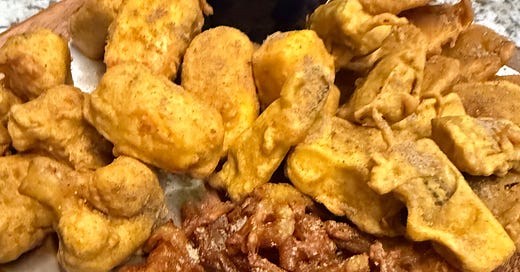



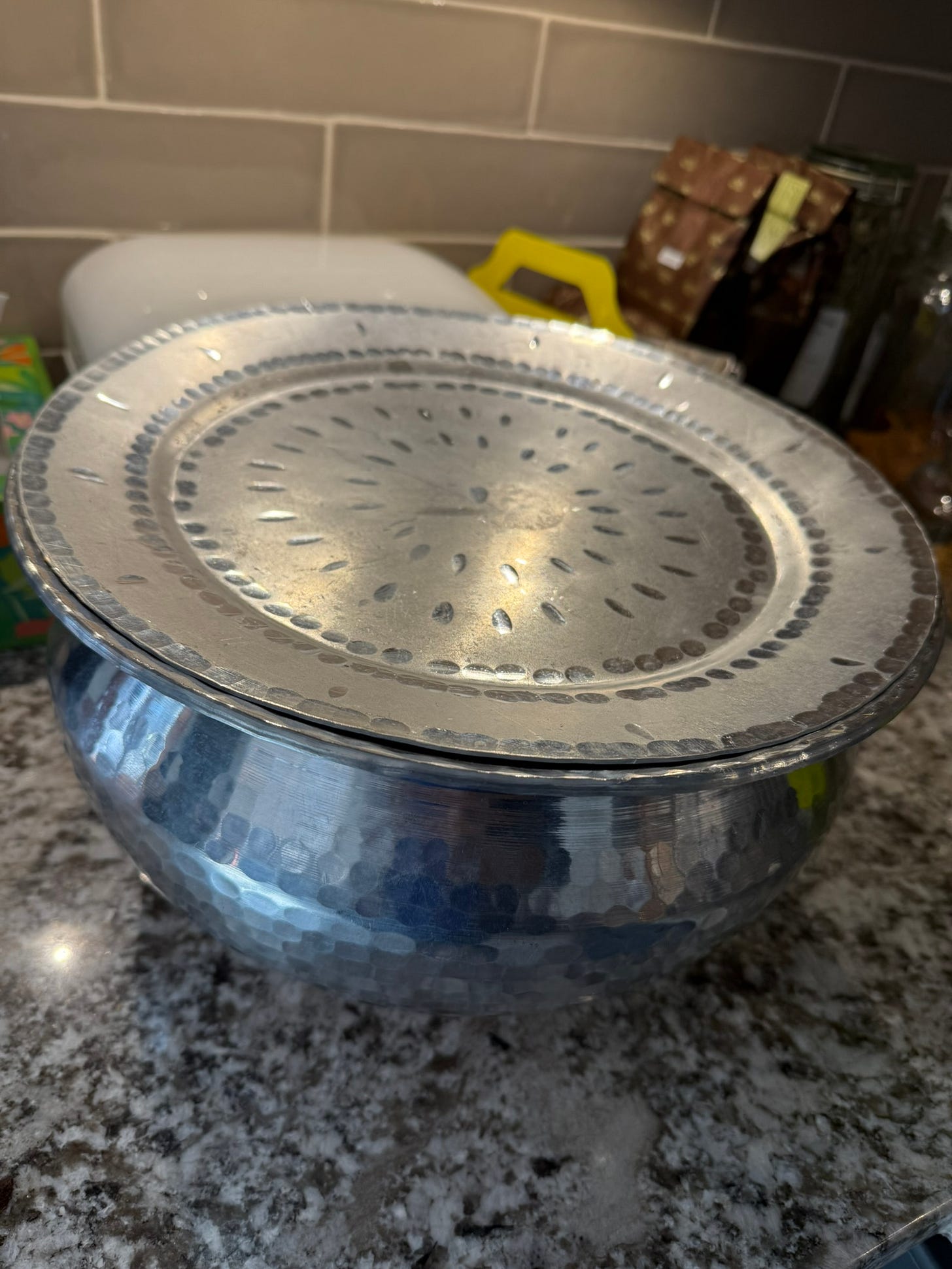

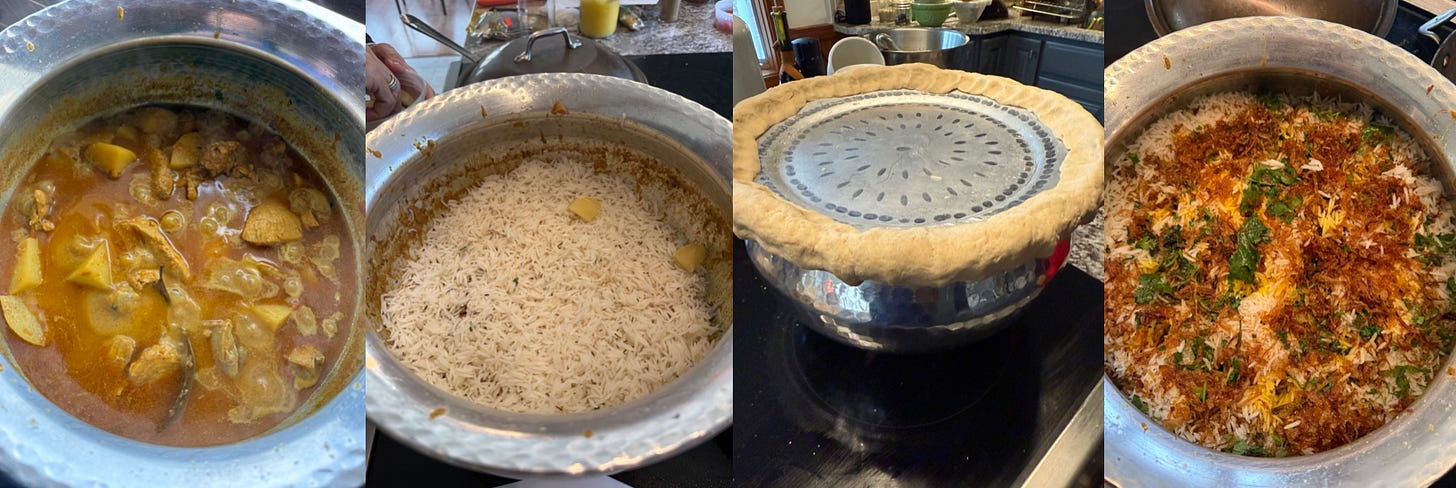
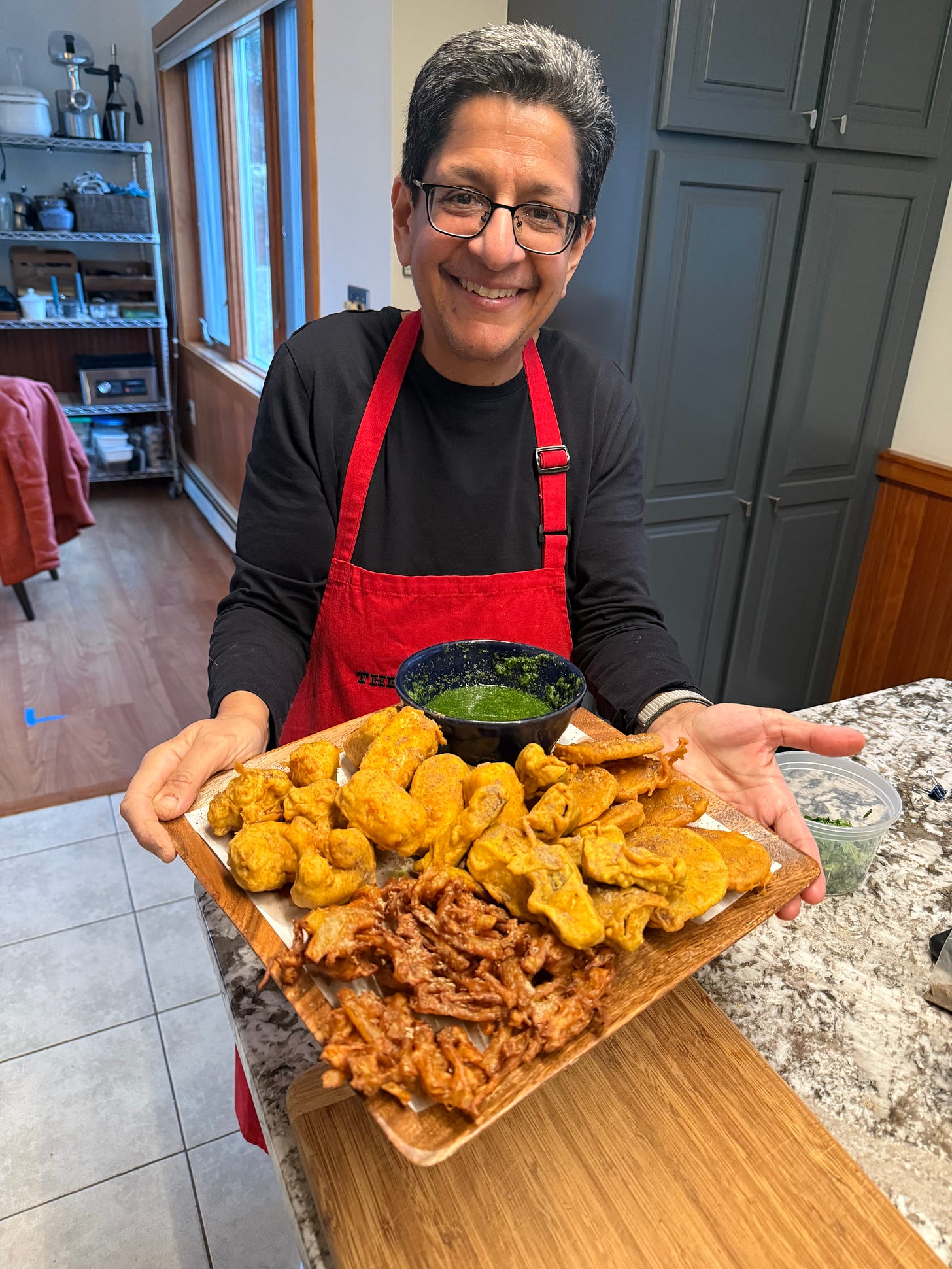



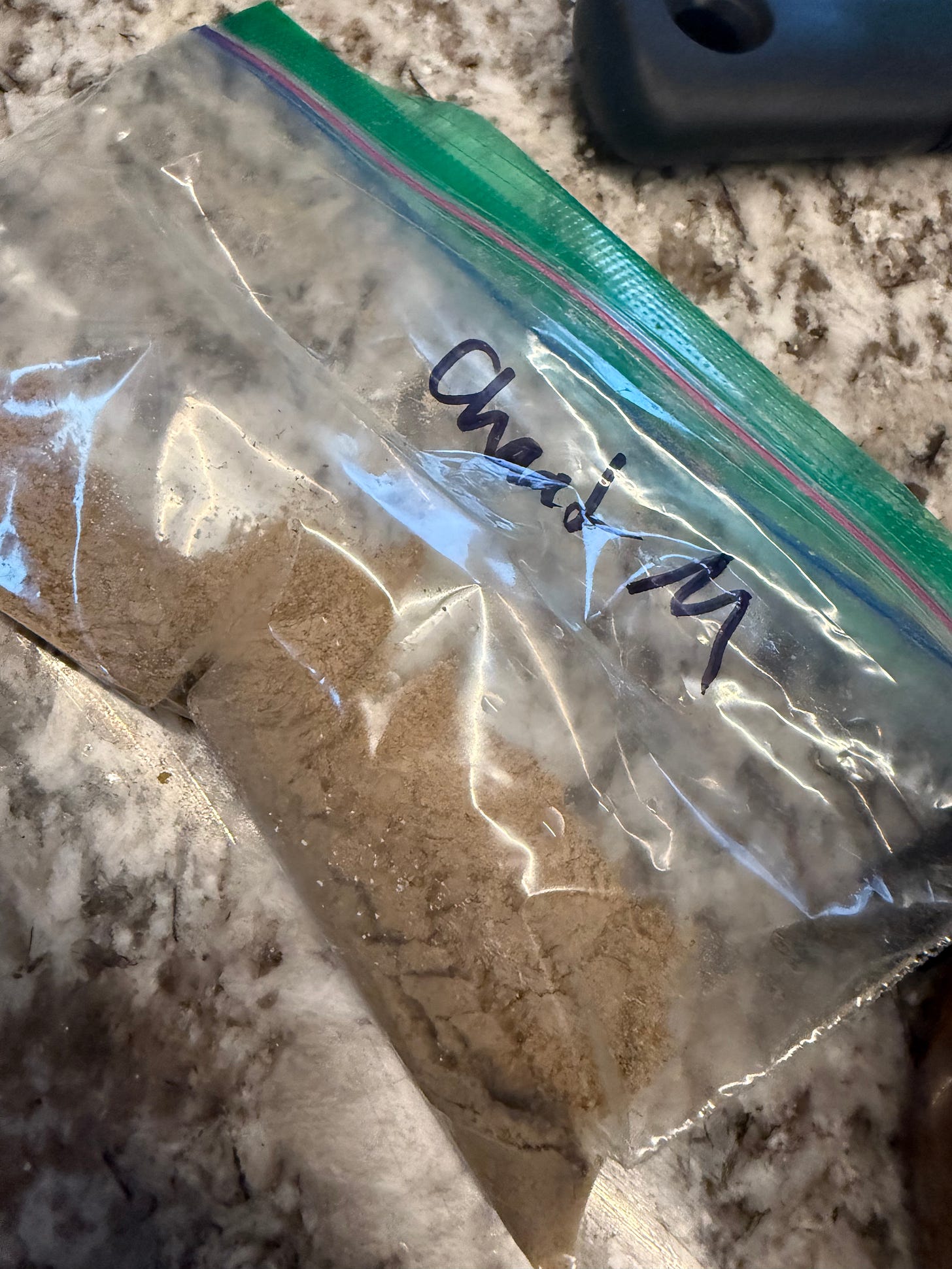
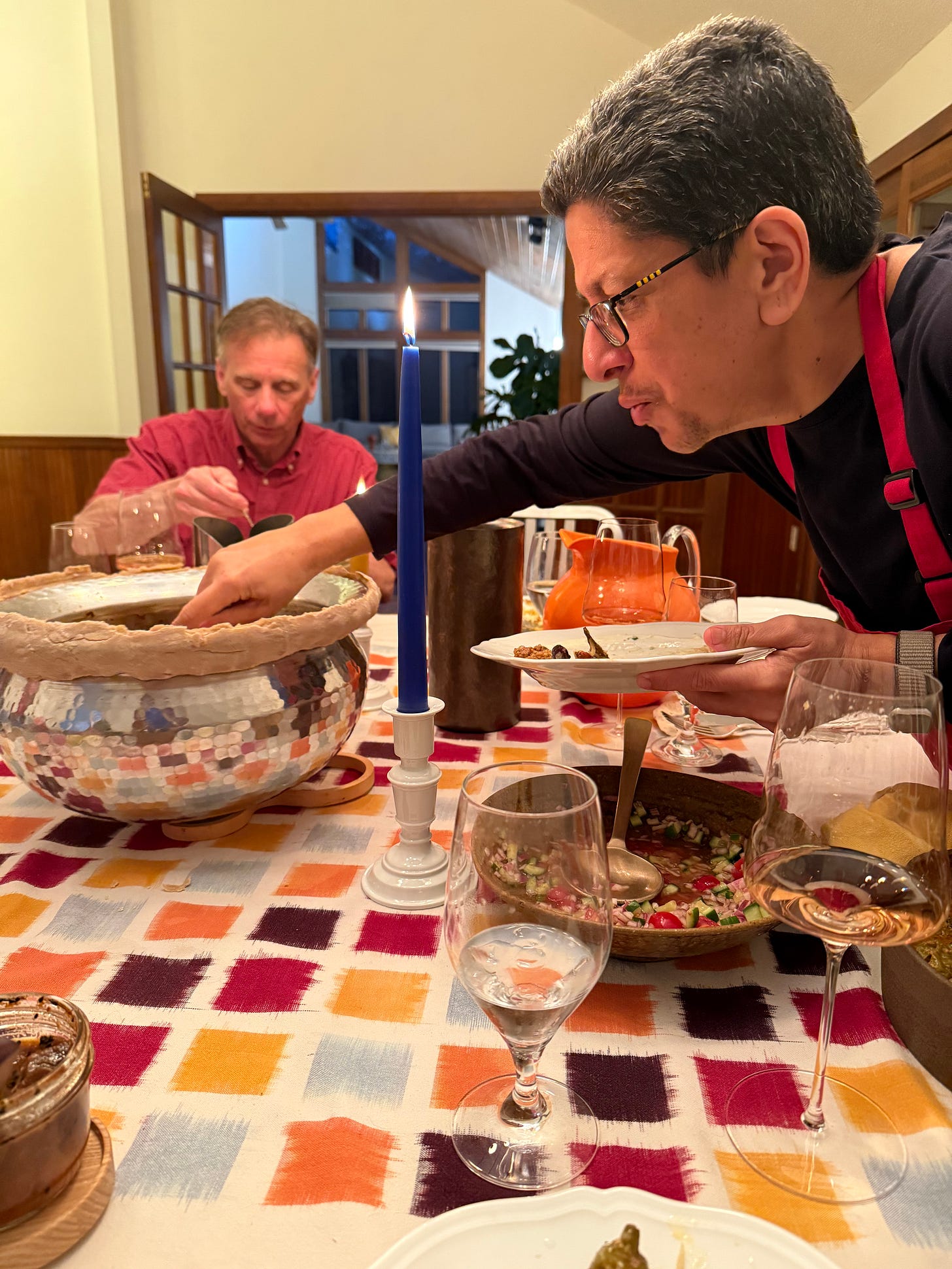
Incredible.